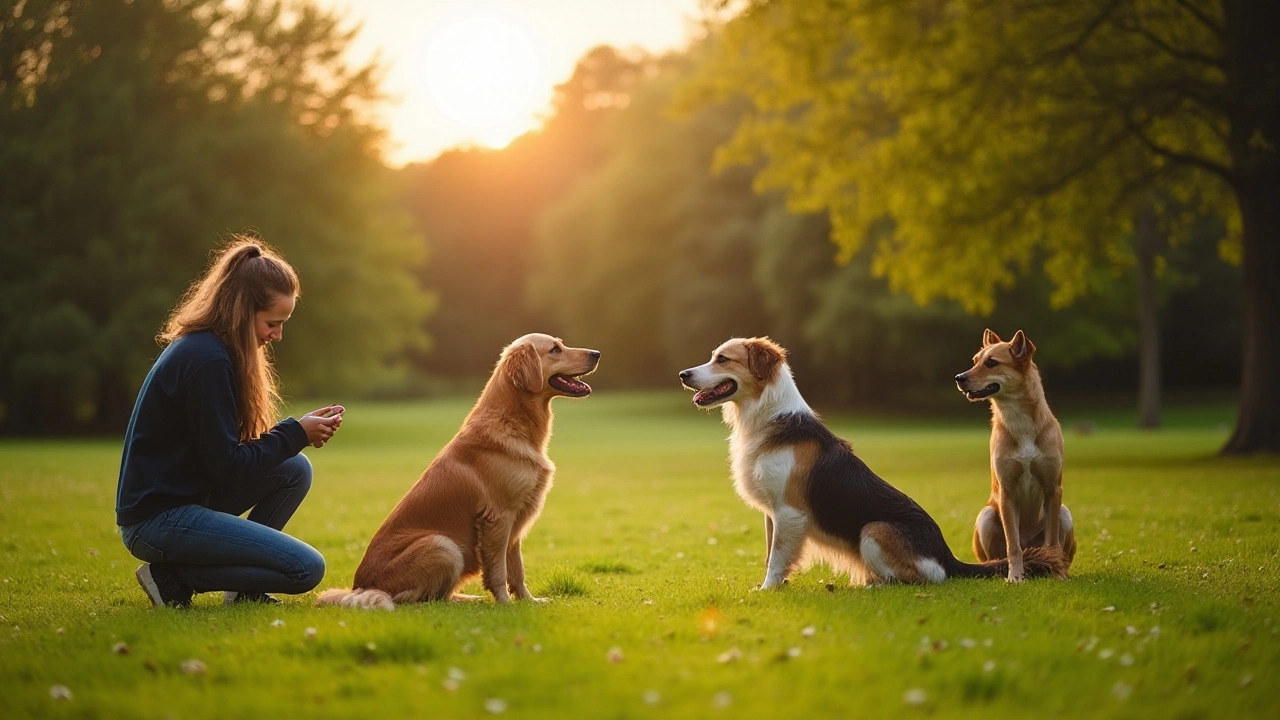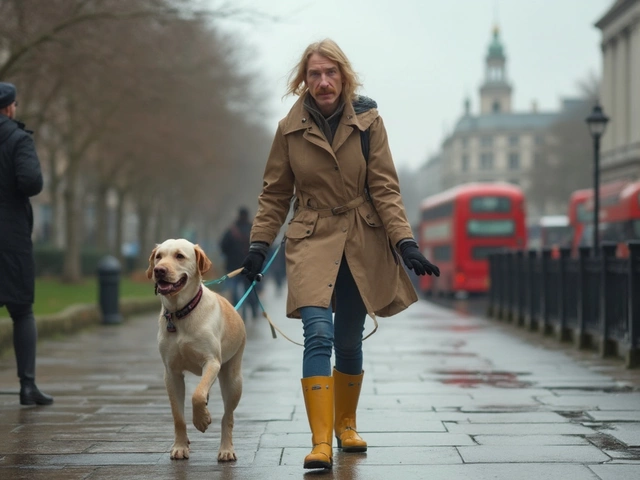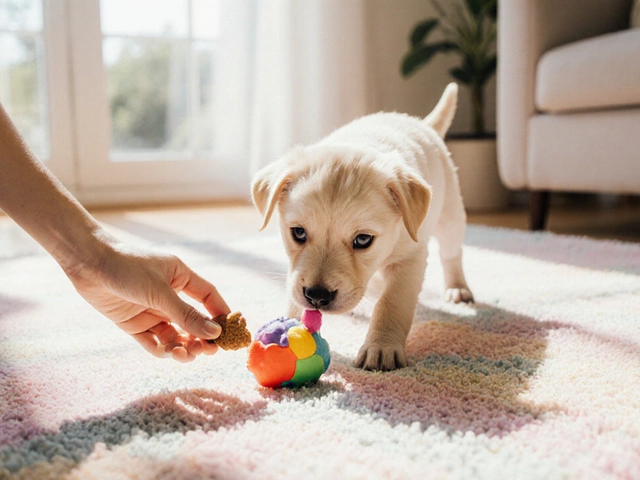Training your dog is a rewarding journey, brimming with bonding opportunities and breakthroughs. While it's vital for teaching commands and addressing behavior issues, the secret often lies in the session's length. Timing is crucial if we want to maintain a dog's enthusiasm and attention.
In this article, we dive into the nuances of crafting an ideal training schedule that respects your dog's natural learning pace. With practical tips and insightful strategies, we'll guide you on how to make each session a constructive and joyful experience. There’s no one-size-fits-all in dog training, but understanding your canine companion's needs is a great place to start.
- Understanding Dog Attention Span
- Tailoring Sessions by Age and Breed
- Signs of Training Fatigue
- Tips for Keeping Sessions Engaging
Understanding Dog Attention Span
The nature of a dog's attention span is as varied as the dogs themselves, and deciphering it is key to effective dog training. On average, a dog's attention span can last between five to ten minutes, though this can waver dramatically based on age, breed, and temperament. Puppies, with their natural zest and curiosity, often have an attention span shorter than adult dogs. A delightful quirk, but one that requires patient guidance. Meanwhile, certain breeds like Border Collies or Labradors might focus intently for longer due to their working dog lineage.
The environment also plays a critical role, as distractions can easily pull a dog's focus away. The bustling surroundings of a park, the excitement of a new toy, or an intriguing scent can all compete for your dog’s attention. To combat this, training ideally starts in a quiet, low-distraction area where the dog feels comfortable and familiar. As noted by renowned dog trainer Ian Dunbar, "Distractions are the biggest hurdle for a dog in learning how to focus," which underscores the need for gradual adjustment to more stimulating settings.
"Sometimes it’s important to know what you need to eliminate from the environment rather than add to it," highlights professional behaviorist Patricia McConnell, emphasizing the art of minimizing distractions for optimal focus.
Research has suggested involving physical movement or interactive tasks can help extend a dog's focus. Incorporating variety—such as a mix of commands, play, and even rest between activities—can keep a dog engaged longer. Moreover, the positive reinforcement of rewards and treats can act as powerful motivators. But it is crucial to remember that each dog responds uniquely, and a rigid training routine might not suit all. Recognizing signs of waning attention, like wandering eyes or frequent yawns, indicates it’s time to wrap up the session or switch tactics.
Understanding your specific dog's attention span can sometimes feel like solving a delightful puzzle where patience and observation are your best tools. It means watching for when your dog is most alert—often after rest or a walk—and utilizing that window to introduce new concepts. This approach not only respects the natural rhythm of your dog’s learning but also fosters a mutual bond of communication. Ultimately, tailoring training sessions to align with your dog’s innate attention abilities can mark the difference between frustration and success in your training journey.
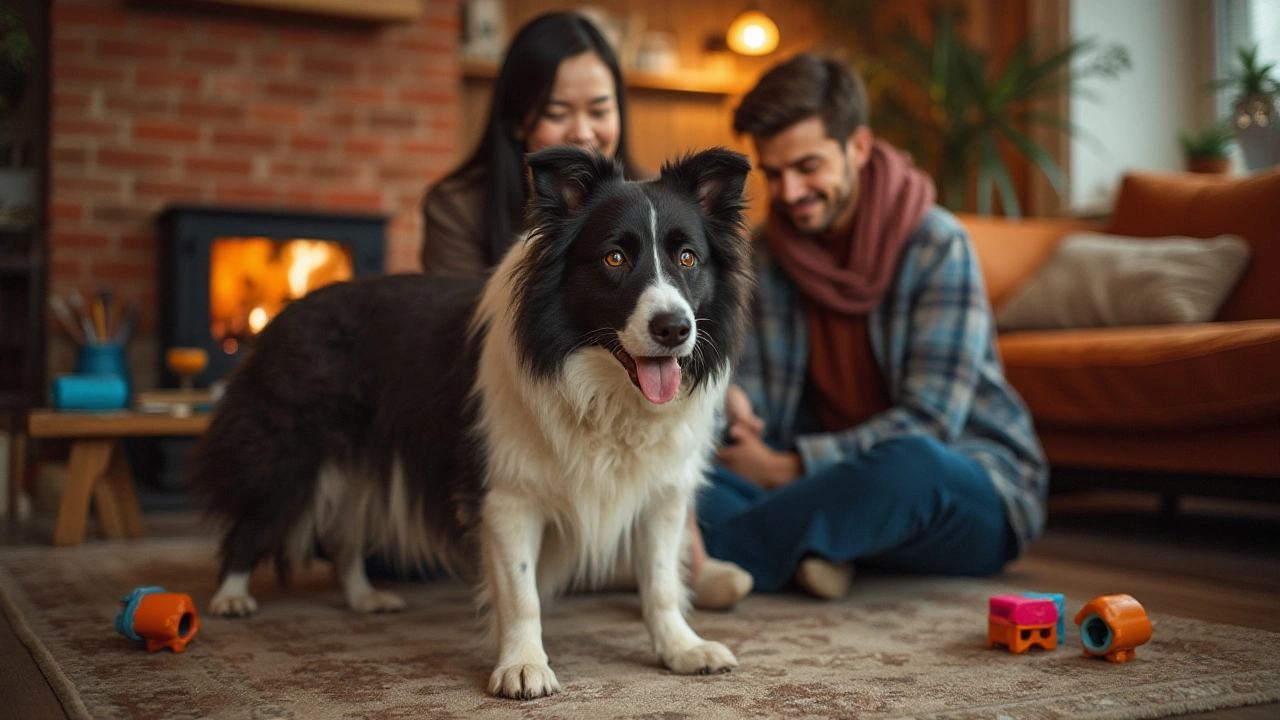
Tailoring Sessions by Age and Breed
Every dog training journey is unique, with each dog bringing their charm and quirks to the table. This uniqueness underscores the importance of tailoring training sessions to fit both the age and breed of your canine companion. Puppies, with their indefatigable enthusiasm, often have shorter attention spans and require training bursts that are frequent yet brief. Short, five to ten-minute sessions multiple times a day can be ideal for pups, ensuring they learn without being overwhelmed. As dogs mature into adults, they can sustain longer sessions, often ranging from fifteen to twenty minutes, which allows for more intensive training without boredom setting in. Senior dogs, with typically reduced energy levels and slower processing speeds, might benefit from less frequent sessions but still appreciate the mental stimulation a consistent schedule offers, possibly around ten to fifteen minutes.
Breeds play a critical role too. High-energy breeds like Border Collies or Australian Shepherds, known for their incredible work ethic and intelligence, thrive on mental challenges and often require longer, more engaging sessions. Incorporating activities that stimulate both their body and brain can make these sessions more productive. On the flip side, more laid-back breeds such as Bulldogs might prefer calmer, shorter sessions. Acknowledging and respecting these differences isn't just beneficial; it's crucial. A quote from Dr. Stanley Coren, a renowned canine psychologist, captures this perfectly:
"Understanding what makes each breed tick can transform a typical training session into a moment of mutual respect and connection."
Adjusting Techniques by Breed
Different breeds also respond better to specific training techniques. For instance, hound breeds, originally trained for tracking scents, may excel in activities that allow them to use their noses. Integrating nose-work games can not only enhance training but also boost their natural instincts. Conversely, terriers, who are independently motivated, might require more patience and perseverance. A significant part of successful dog training hinges on recognizing these predilections and using them to your advantage. Mixing treats, toys, and positive rewards can spark joy in training and motivate dogs even more.
Precision in timing and approach can lead to faster learning and better behavior retention. A fascinating study by the University of Lincoln found that Labradors effectively retained commands with only five minutes of training a day when activities were customized to their needs. However, the same approach might not yield equal success with breeds like Beagles, who often require more repetition due to their distinct behavioral traits. Creating a harmonious balance in training sessions thus not only cultivates learned behavior but strengthens your bond with your pet.
Practical Tips for Age-Specific Training
When training a young puppy, incorporating play into the session can work wonders for maintaining engagement and ensuring lessons stick. Gently introducing commands amidst playful banter helps create a positive association with training from the get-go. By using age-appropriate methods like gentle verbal cues, simple commands, and lots of encouragement, puppies acclimate quicker and see training as a fun experience rather than a chore.
For adult dogs, combining physical activity with training can be beneficial. Activities like fetch or gentle tug-of-war can burn off excess energy, allowing the dog to focus better when transitioning to mental exercises. Setting realistic yet challenging expectations for adult dogs can lead to substantial behavioral improvements over time. With senior dogs, soft encouragement with treats and affection can support their learning process. Regardless of age, the key to training tips success remains consistent practice, patience, and the undying love you share with your pet.
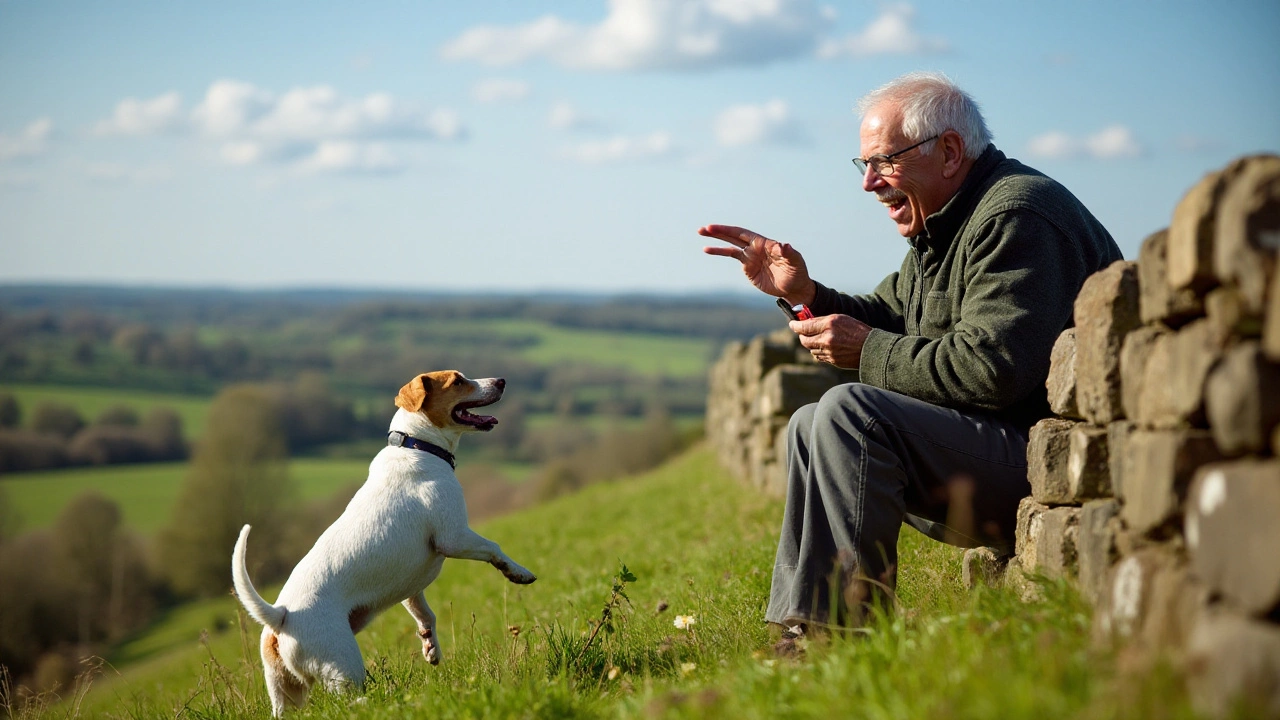
Signs of Training Fatigue
Recognizing when your furry friend is experiencing training fatigue is crucial in ensuring their learning remains a positive experience. As we dive deeper into understanding our dogs, we must keenly observe their behavior during each dog training session. Dogs, much like humans, have moments when their ability to absorb and retain information dwindles, and pushing beyond this point can lead to frustration both for you and your pup. Subtle cues often give away that your pet is getting tired or overwhelmed.
One of the first signs is when your dog starts to lose interest and wanders off. This change in focus is a strong indication that their attention span has reached its limit. Consistently ignoring commands or showing a lack of enthusiasm can reflect mental exhaustion. Pay attention to physical signals too, like excessive yawning, panting, or even lying down mid-session. These non-verbal cues are just as telling, revealing that perhaps your pet has reached the end of their effective learning threshold for the day.
Other signs may include a rise in stubborn or disruptive behavior, where your pet might begin to resist or even rebel against tasks they previously executed without issues. Some dogs might become hyperactive - as if they are acting out from sheer tiredness - while others might display the opposite, appearing lethargic and uninterested. In a study conducted by the American Kennel Club, they found that alternating stimulating activities with rest periods during training enhances a dog's learning retention significantly.
"It's vital to end training on a positive note, ensuring the last task is one they can complete successfully," says Dr. Sophia Yin, a respected animal behaviorist. "This way, a dog ends a session feeling accomplished rather than exhausted."
If your canine companion often seems fatigued early into sessions, evaluate whether they are getting enough physical exercise outside of training too. An active dog might simply need more varied activities to stimulate their brain and body. Remember, personalized and adaptable training tips can assist in catering to different energy levels. Be mindful to adjust the pace and intensity as needed, ensuring your pet's behavior remains positive throughout.
Lastly, consider keeping a training journal. Note down when your dog appears overtired and document the tactics used to mitigate fatigue. Keeping track helps build a tailored approach that aligns with your dog's unique capabilities and daily moods. By tuning into these indicators and responding accordingly, you pave the way for a more effective, harmonious training routine that your dog will thrive on.
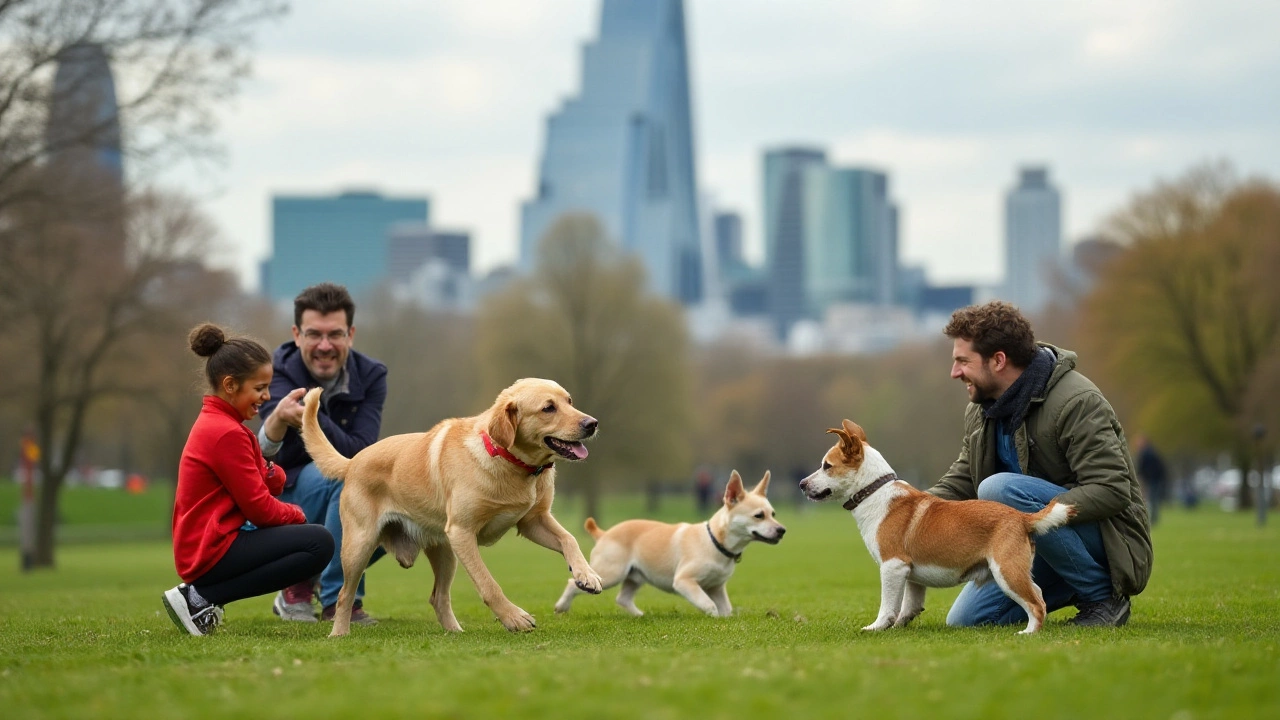
Tips for Keeping Sessions Engaging
Creating an engaging dog training session is like crafting a captivating story for a curious audience. To maintain your dog's attention and interest, variety and interaction are vital. Dogs can be like children in school – too much repetition, and their attention drifts, drawn away by the simplest distractions. To counteract this, incorporate a mix of activities and exercises that challenge your dog's mind and body. This could include playing fetch in between training commands or using obstacle courses that stimulate both physical and mental faculties. By blending training with play, your dog learns that the sessions are about fun and learning together, not just work.
Incorporating treats and toys as rewards can also transform the dynamics of your training sessions. Rewards act as incentives, keeping your dog motivated and eager to participate. However, it is crucial to ensure these incentives are offered at the right moment – immediately after the desired behavior. This helps create a positive association in your dog's mind. Dogs, being creatures of habit, rapidly start to understand that a particular behavior leads to something pleasant, which in turn fosters repetition of that behavior. It’s amazing how quickly they catch on when they see that behaving well earns them a favorite treat or playtime with a beloved toy.
Consistency in using cues and commands is another core element for successfully engaging your dog during training. A mixed bag of words or even slight variations in tone can lead to confusion, which can demotivate your dog. Choose simple, clear commands and consistently apply them to remove ambiguity. Dogs respond best to positive reinforcement, so ensure your praise is hearty and genuine when they perform well. If things don't go to plan, avoid scolding; instead, gently guide them back on track. A balanced, patient approach can do wonders for maintaining an enjoyable, productive training atmosphere.
Time and observation play a critical role in understanding and adapting to your individual dog's learning style. By observing, you'll learn the signs of boredom or fatigue, signaling when it's time to switch activities or wrap things up. Varying the environment can also help. Just a change of scenery, perhaps training outdoors or visiting new locations, provides fresh stimuli and challenges. These small shifts reinvigorate your dog's enthusiasm as they associate different settings with different types of fun exercises. As the saying goes, variety is indeed the spice of life, and it certainly holds true in the context of uplifting training sessions.
Finally, incorporating social elements into your training tips can be exceptionally rewarding. Dogs are inherently social creatures, and involving other dogs in training sessions can foster healthy competition and cooperation. This not only helps with socialization skills but also introduces a playful, communal spirit into the training. Whether it's a game of tag or synchronized command training with a canine buddy, learning alongside others can be both motivating and exhilarating. Consider joining a local dog group or class where structured multi-dog lessons are held. Much like humans, dogs often thrive on mutual energy and enthusiasm.
